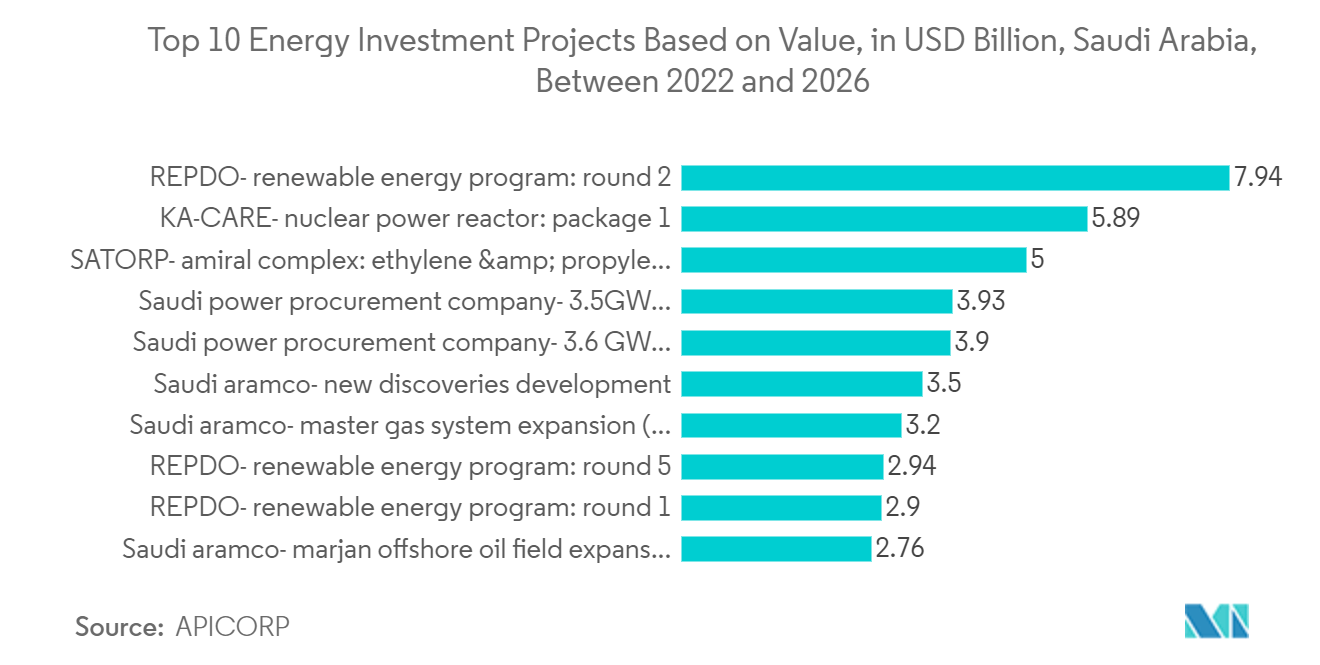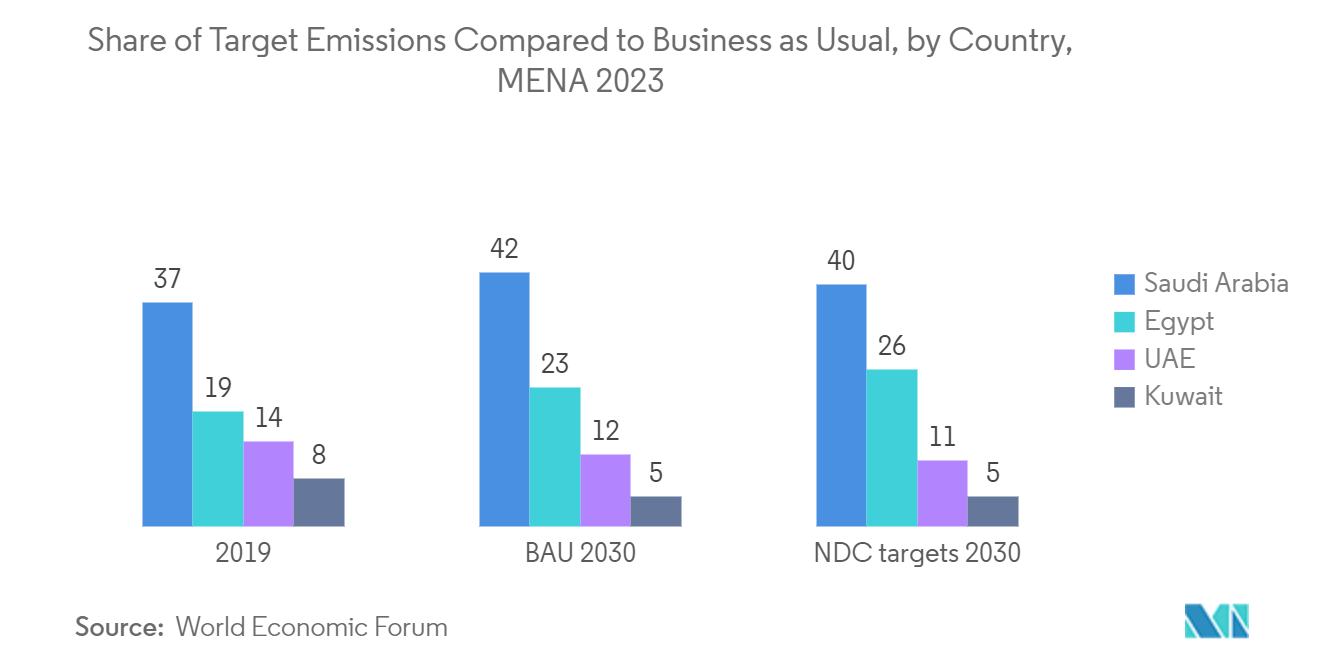Market Trends of Saudi Arabia Satellite-based Earth Observation Industry
Energy and Raw Materials Segment is Anticipated to Grow at a Significant rate
- The energy and raw materials segment in the KSA satellite-based earth observation market is analyzed to grow significantly owing to the increasing investments in the energy sector coupled with various benefits associated with earth-observation data in the energy and raw materials sector throughout all the phases of energy production and supply, ranging from identifying reservoirs and sites to controlling and monitoring of the distribution networks across the country.
- Moreover, the upcoming high-value energy projects in the country further drive the demand for satellite-based earth observation solutions to get the maximum output, thus driving the studied market growth in the coming years. For instance, according to the data from the APICORP, Between 2022 and 2026, the REPDO-renewable energy program (round 2) had the highest value in Saudi Arabia, amounting to nearly USD eight billion. Moreover, the value of the Saudi Aramco Marjan offshore oil field expansion project was approximately USD 2.7 billion.
- In March 2023, the Ministry of Energy, Saudi Arabia, announced that the country is now the world's leader in renewable energy production growth indicators in 2 years since Crown Prince Mohammed bin Salman launched Saudi Green Initiative (SGI). The country's renewable energy segment can benefit from Earth Observation's information. For instance, by providing weather, ocean, and sea status forecasts, EO helps plan and optimize operations during the construction and maintenance phases.
- Further, under Saudi Vision 2030, the country plans to generate 50% of its electricity from renewables and the other half from gas. This is expected to provide substantial growth opportunities for the Earth observation market as EO lends itself very well to site selection, planning, and monitoring for raw materials and renewable energy because many sites are being developed in increasingly isolated parts of the world.

Rising Demand for the Environmental Monitoring
- The growing environmental issues across the country are driving the demand for earth observation satellites for environmental monitoring.
- Saudi Vision 2030 is a sustainable vision for the future of Saudi Arabia, with sustainability at the core, from policy development and investment to planning and infrastructure. Further, Saudi Arabia contributes to the immense environmental impacts associated with oil drilling as it is the biggest oil exporter in OPEC. Such factors are further analyzed to grow the investments in environmental monitoring, which is expected to drive the demand for satellite-based earth observation solutions in the Kingdom in the coming years.
- Further, the country is leveraging earth observation data from earth observation satellites, namely Saudisat 5A and Saudisat 5B, to better understand how to mitigate global warming. The data enables the monitoring and modeling of the Earth's climate system, helping the country to make predictions. Satellite data from Earth Observation Satellites (EOS) provide information on greenhouse gas (GHG) emissions, the environmental changes from deforestation, melting ice, carbon dioxide levels, and the rise of sea levels, to name just a few areas.
- The increasing demand for environmental monitoring in the region propelled the market for satellite-based earth observation solutions in the country, and the government has launched earth observation satellites to gain Earth observation data that can help advance Vision 2030 goals, especially those related to protecting and restoring the environment. For instance, King Abdullah University of Science and Technology (KAUST) recently launched a Cubesat satellite to collect high-resolution and high-quality data across global coastal, terrestrial, and ocean ecosystems to help the country observe and characterize its unique natural resources.


